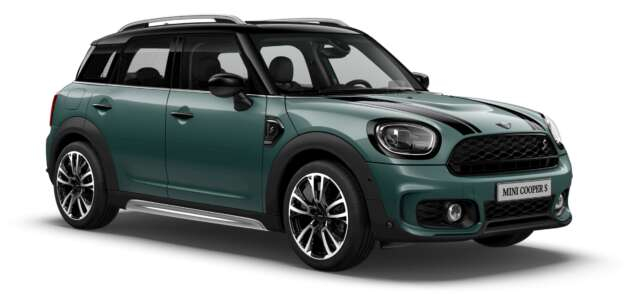
When it comes to compact cars, the Mini Cooper stands out as an icon of style, performance, and personality. Since its inception, the Mini brand has carved a niche for itself in the automotive world, blending British heritage with modern flair. However, in a market flooded with diverse options, how does the Mini Cooper compare to its competitors? Let’s delve into the key factors that set the Mini apart and how it stacks up against other popular choices.
Design and Style
One of the most distinguishing features of the Mini Cooper is its distinctive design. Originally crafted by Sir Alec Issigonis in the 1950s, the Mini has evolved into a compact car that exudes charm and character. Its signature compact proportions, rounded edges, and iconic contrasting roof make it instantly recognizable on the road.
Compared to competitors like the Volkswagen Golf, Fiat 500, and Honda Fit, the Mini Cooper often appeals to those seeking a blend of retro aesthetics with contemporary styling cues. Its customizable options, including a wide array of paint colors, roof designs, and exterior accents, allow owners to personalize their Mini to reflect their unique taste and preferences.
Performance and Driving Dynamics
Mini Coopers are renowned for their agile handling and nimble performance, characteristics that stem from their go-kart-like feel and low center of gravity. The Cooper’s responsive steering and firm suspension contribute to a sporty driving experience, ideal for navigating urban streets and winding country roads alike.
In contrast, competitors such as the Ford Fiesta and Mazda 2 offer similar compact dimensions but may prioritize different aspects of performance, such as fuel efficiency or affordability. While the Mini Cooper’s turbocharged engine options provide spirited acceleration and impressive torque, competitors may offer more economical choices tailored to different driving preferences.
Interior Comfort and Features
Inside the Mini Cooper, drivers and passengers are treated to a well-crafted cabin that blends retro styling with modern amenities. Despite its compact size, the Mini’s interior layout maximizes space efficiency, offering ample headroom and legroom for occupants. Quality materials, including premium leather upholstery and brushed aluminum accents, contribute to an upscale feel.
Comparatively, competitors like the Hyundai Veloster and Toyota Yaris may focus on practicality and affordability, offering straightforward interiors with functional features suited to daily commuting. However, the Mini Cooper’s attention to detail and ergonomic design elements, such as its iconic center-mounted speedometer and intuitive infotainment system, elevate the driving experience to a more premium level.
Technology and Connectivity
In today’s connected world, automotive technology plays a crucial role in enhancing convenience, safety, and entertainment. The Mini Cooper integrates advanced features such as a touchscreen display, smartphone compatibility with Apple CarPlay and Android Auto, and optional navigation systems to keep drivers informed and entertained on the go.
Competitors like the Kia Rio and Chevrolet Spark may offer similar tech options at competitive price points, appealing to budget-conscious consumers. However, the Mini Cooper distinguishes itself with its intuitive user interface and BMW-inspired tech innovations, ensuring a seamless integration of digital experiences into the driving journey.
Safety and Reliability
Safety is paramount in any vehicle comparison, and the Mini Cooper maintains high standards with its robust suite of safety features. From advanced driver-assistance systems (ADAS) like automatic emergency braking and adaptive cruise control to standard airbags and reinforced safety structures, the Mini prioritizes occupant protection and peace of mind.
While competitors like the Nissan Micra and Renault Clio also prioritize safety, the Mini Cooper’s reputation for reliability and durability adds another layer of assurance for prospective buyers. With regular maintenance and adherence to manufacturer guidelines, Mini Coopers are known to provide years of dependable performance and ownership satisfaction.
Cost of Ownership and Value Proposition
The cost of owning a Mini Cooper extends beyond the initial purchase price and includes factors such as maintenance, fuel efficiency, insurance premiums, and resale value. While Mini Coopers may command a premium compared to entry-level models from competitors, their strong resale value and enduring appeal often justify the investment for enthusiasts seeking a distinctive driving experience.
In contrast, competitors like the Peugeot 208 and Citroën C3 may offer competitive pricing and lower running costs, appealing to budget-conscious consumers. The decision between a Mini Cooper and its competitors ultimately hinges on individual priorities, whether it’s a preference for style and performance or a focus on practicality and affordability.
Conclusion
In conclusion, the Mini Cooper stands out in the competitive landscape of compact cars for its iconic design, spirited performance, and premium appeal. While comparisons with competitors reveal varying strengths in areas such as affordability, practicality, and technological features, the Mini Cooper continues to attract drivers who prioritize style, driving dynamics, and a personalized ownership experience.
Whether you’re drawn to the Mini Cooper’s heritage and customization options or exploring alternatives for your next compact car purchase, understanding how the Mini stacks up against competitors provides valuable insights into making an informed decision that aligns with your lifestyle and driving preferences.




